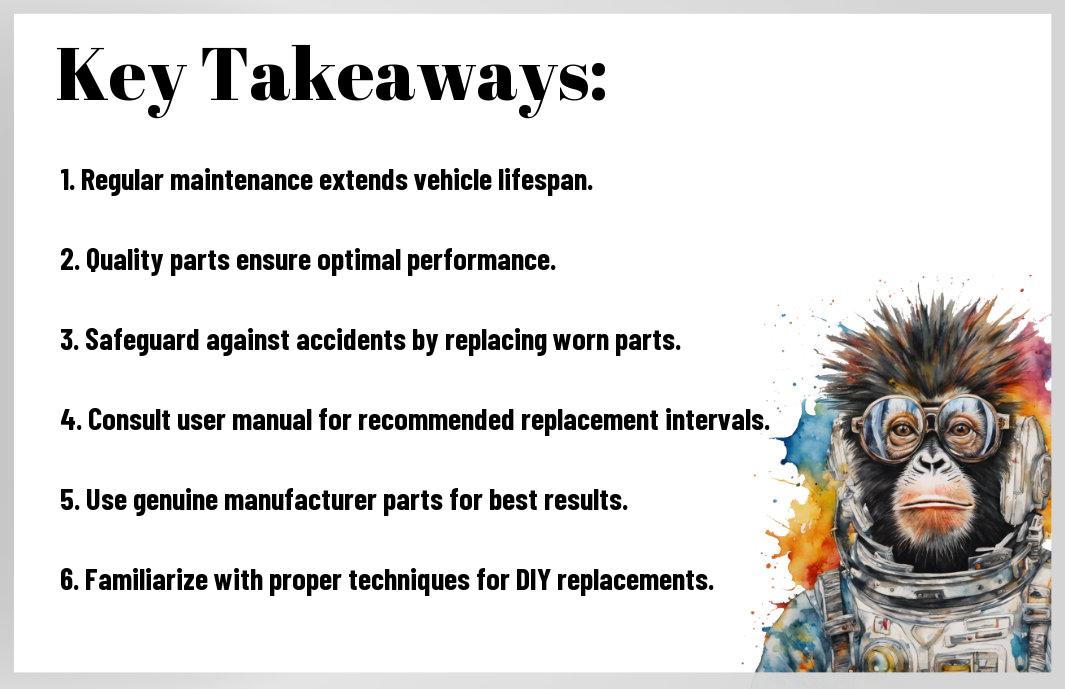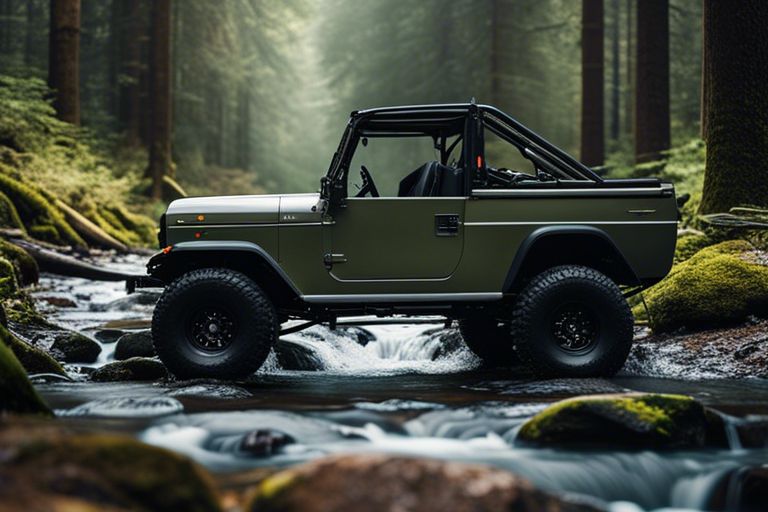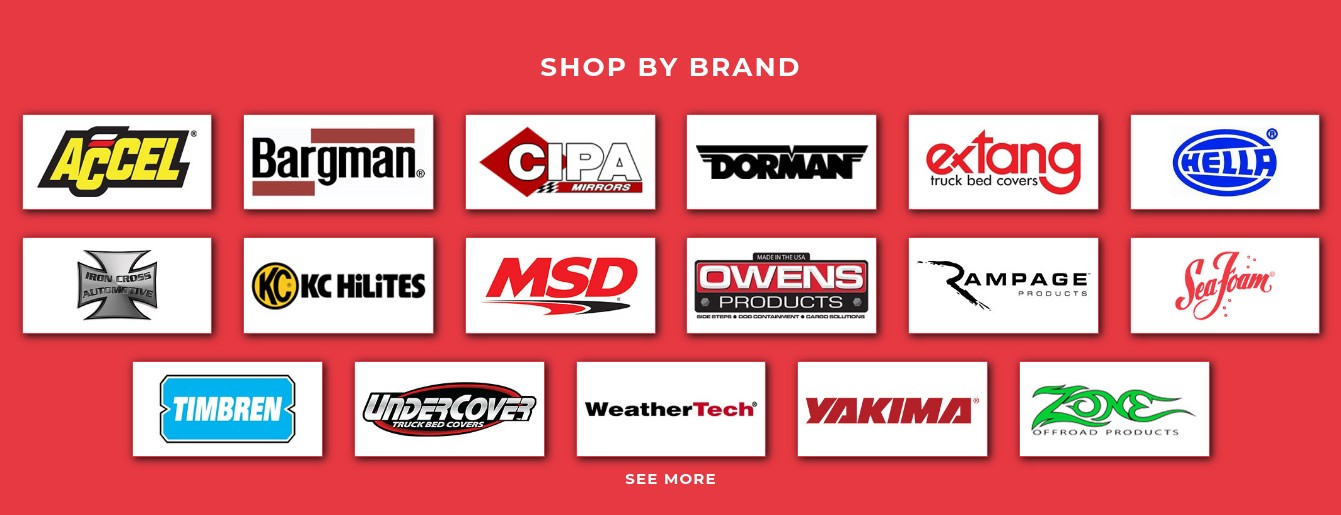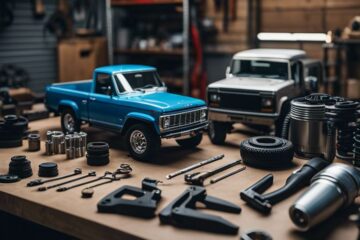Over time, the wear and tear of off-road adventures can take a toll on your vehicle’s parts. Regarding maintaining the performance and safety of your off-road vehicle, timely replacement of crucial parts is crucial. In this blog post, we will guide you through the process of identifying when certain parts need to be replaced, as well as provide valuable tips on selecting high-quality replacement parts to ensure your off-road vehicle stays in top condition for your next thrilling ride.
Key Takeaways:
- Regular Maintenance: Performing regular maintenance on off-road vehicle parts can help prevent breakdowns and extend the lifespan of the vehicle.
- Quality Parts: Using high-quality replacement parts for off-road vehicles is crucial for optimal performance and durability in rugged conditions.
- Proper Installation: Proper installation of off-road vehicle parts is crucial to ensure safety and functionality when tackling challenging terrains.

Identifying Wear and Tear
Signs of Worn-Out Parts
While off-roading is a thrilling adventure, it can take a toll on your vehicle. As you push your off-road vehicle to its limits, you may start to notice signs of wear and tear on various parts. Paying attention to these signs is crucial for ensuring the safety and optimal performance of your vehicle.
An important indication of worn-out parts is unusual noises such as squeaking, clunking, or grinding coming from the vehicle. These sounds can be a sign of worn suspension components, loose bolts, or damaged drivetrain parts. It’s important to address these issues promptly to prevent further damage and ensure your safety while off-roading.
Another common sign of worn-out parts is reduced performance or efficiency. If you notice a decrease in power, fuel efficiency, or overall performance of your off-road vehicle, it could indicate issues with the engine, transmission, or other crucial components. Regular maintenance and timely replacement of worn parts can help restore your vehicle’s performance and prevent costly repairs.
Regular Inspection Checklists
With off-road vehicles enduring rough terrains and challenging environments, regular inspections are important to identify wear and tear before it leads to more significant problems. Developing a comprehensive inspection checklist can help you systematically assess various parts of your vehicle and address any issues promptly.
Plus, having a checklist can ensure that you don’t overlook crucial components that may be prone to wear and tear during off-road adventures. Your checklist should include items such as suspension components, brakes, tires, drivetrain, and fluid levels. By regularly inspecting these areas and replacing worn-out parts as needed, you can maintain the longevity and performance of your off-road vehicle.
Choosing the Right Replacement Parts
OEM vs. Aftermarket Parts
Some off-road enthusiasts swear by Original Equipment Manufacturer (OEM) parts, as they are made by the same company that produced your vehicle. These parts are designed to fit perfectly and maintain the original performance of your off-road vehicle. On the other hand, aftermarket parts are manufactured by third-party companies. One advantage of aftermarket parts is that they are often more affordable than OEM parts. However, quality can vary among different brands, so it’s necessary to choose reputable manufacturers to ensure durability and performance.
Considerations for Off-Road Vehicle Specificities
One crucial consideration when selecting replacement parts for your off-road vehicle is the specific demands of off-road terrain. Off-road driving puts extreme stress on your vehicle, so it’s necessary to choose parts that can withstand rough conditions. When replacing parts, opt for components that are designed for off-road use and have features like reinforced construction and enhanced durability. Consider factors such as suspension articulation, ground clearance, and traction when choosing replacement parts for your off-road adventures.
Off-road vehicles often require specialized parts that are different from those used in standard vehicles. These parts are designed to enhance the performance of your off-road vehicle and ensure it can tackle challenging terrains. Components like off-road tires, lift kits, skid plates, and heavy-duty suspension systems are tailored to meet the unique needs of off-road driving. When identifying replacement parts, prioritize those that are specifically designed for off-road use to optimize your vehicle’s capability and durability.
Aftermarket parts for off-road vehicles offer a wide range of options to customize and upgrade your vehicle according to your preferences and driving style. These parts can help improve performance, enhance off-road capabilities, and personalize the look of your vehicle. Whether you’re looking to increase horsepower, upgrade your suspension, or add protection to your vehicle, aftermarket parts provide flexibility and choice to tailor your off-road vehicle to your needs.
Tools and Equipment Needed
All Off Road Parts & 4X4 Accessories enthusiasts know that having the right tools and equipment is crucial for replacing off-road vehicle parts. Whether you are upgrading your suspension, installing new bumpers, or replacing worn-out components, having the necessary tools will make the job much easier and ensure a successful outcome.
Essential Tools for Replacement
For the replacement of off-road vehicle parts, you will need a basic set of tools such as wrenches, sockets, screwdrivers, pliers, and a torque wrench. In addition to these hand tools, having a floor jack, jack stands, and a creeper will make working underneath your vehicle safer and more comfortable. It’s also a good idea to have specialty tools like a ball joint press, bearing puller, and tie rod end puller for specific replacement tasks.
Safety Precautions and Protective Gear
Tools can only take you so far when it comes to replacing off-road vehicle parts. Your safety should always be a top priority, so make sure to wear the proper protective gear. When working on your vehicle, wear safety glasses to protect your eyes from debris and chemicals. Gloves will help protect your hands from cuts and bruises, especially when dealing with sharp edges or hot components. Additionally, a sturdy pair of work boots will provide traction and protect your feet from heavy parts.
Equipment
When replacing off-road vehicle parts, having a well-lit and ventilated workspace is crucial. A good quality flashlight or work light will help you see clearly in dark or tight areas, ensuring that you can work efficiently and safely. Furthermore, a fire extinguisher should always be within reach in case of emergencies. Prioritizing safety and being prepared with the right equipment will not only make the replacement process smoother but also give you peace of mind as you work on your off-road vehicle.

Replacing Critical Components
Many off-road vehicles require regular maintenance and part replacements to ensure optimal performance and safety. Some critical components that may need replacing include brake pads and rotors, suspension and steering components, as well as engine and transmission parts. By replacing these parts in a timely manner, you can prolong the life of your off-road vehicle and prevent potential breakdowns during your adventures.
Brake Pads and Rotors
One of the most important components of your off-road vehicle’s braking system is the brake pads and rotors. Over time, these parts can wear down due to constant use and exposure to the elements. It is important to regularly inspect and replace your brake pads and rotors to ensure maximum stopping power and avoid brake failure. Signs that indicate you may need to replace these components include squeaking or grinding noises when braking, vibration or pulsation in the brake pedal, and decreased braking performance.
When replacing brake pads and rotors, it is recommended to use high-quality, durable parts that are specifically designed for off-road use. Opt for materials that can withstand the rigors of rough terrain and provide consistent braking performance in various conditions. Additionally, make sure to follow the manufacturer’s guidelines for proper installation and break-in procedures to ensure optimal performance and longevity.
Regularly inspecting and maintaining your off-road vehicle’s braking system is crucial for your safety and the safety of others while out on the trails. By being proactive and replacing brake pads and rotors when needed, you can enjoy peace of mind knowing that your vehicle is equipped to handle the demands of off-road driving.
Suspension and Steering Components
An off-road vehicle’s suspension and steering components play a vital role in providing a smooth and controlled ride over rough terrain. These parts are subjected to constant stress and impact from off-road driving, which can lead to wear and potential failure over time. It is important to regularly inspect and replace suspension and steering components such as shocks, struts, ball joints, tie rods, and bushings to maintain optimal handling and stability.
Upgrading your off-road vehicle’s suspension system with high-performance components can enhance its off-road capabilities and overall ride quality. Consider replacing worn-out parts with heavy-duty components that are designed to withstand the demands of off-road driving. Additionally, proper alignment and regular maintenance of suspension and steering components can help prevent premature wear and ensure a safe and enjoyable off-road experience.
Engine and Transmission Parts
Replacing critical engine and transmission parts in your off-road vehicle is important for maintaining performance and reliability on the trails. Components such as air filters, spark plugs, belts, hoses, and transmission fluid need to be regularly inspected and replaced to prevent breakdowns and costly repairs. By staying on top of maintenance and part replacements, you can ensure that your off-road vehicle continues to operate at its best and avoid unexpected issues during your adventures.
An off-road vehicle’s engine and transmission are subjected to extreme conditions while navigating rough terrain, which can lead to accelerated wear and potential damage to critical components. By replacing worn-out parts with high-quality replacements and following the manufacturer’s recommended maintenance schedule, you can extend the life of your engine and transmission, improve fuel efficiency, and enhance overall performance. Regularly checking fluid levels and addressing any leaks or abnormal noises can help you identify potential issues early on and prevent more significant problems down the line.
With proper maintenance and timely replacements of critical components, you can ensure that your off-road vehicle is ready for any adventure that comes your way. By investing in high-quality parts and staying proactive about inspection and maintenance, you can enjoy a safe, smooth, and exhilarating off-road driving experience. Be mindful of, your off-road vehicle’s performance and longevity depend on the care and attention you provide, so make sure to prioritize regular maintenance and part replacements to keep it running at its best.
Replacing Wheels and Tires
Selecting the Right Tire Type
For off-road enthusiasts like yourself, selecting the right tire type is crucial for your vehicle’s performance. When replacing your wheels and tires, you must consider the terrain you will be navigating. Mud-terrain tires are perfect for off-roading in muddy, rocky, or rough terrains, providing excellent traction and durability. On the other hand, all-terrain tires are versatile options, suitable for a mix of on-road and off-road driving.
Before making a decision, assess your driving habits and the conditions you typically encounter. Do you frequently drive off-road or stick to paved roads? By understanding your needs, you can choose the tire type that will best enhance your off-road adventures.
When replacing your wheels and tires, consult with a professional to ensure you select the right tire type for your specific off-road vehicle. They can provide guidance based on your driving preferences, vehicle specifications, and the terrain you will be traversing, ultimately helping you make an informed decision.
Wheel Replacement and Balancing
Replacing your wheels is not just about aesthetics; it also impacts your vehicle’s performance and safety. When upgrading your off-road vehicle’s wheels, you must ensure they are compatible with your tires and vehicle specifications. Additionally, proper wheel balancing is crucial to prevent vibrations, uneven tire wear, and steering issues.
Professional wheel balancing is necessary after wheel replacement to maintain stability and improve handling, especially when driving off-road. Experts use specialized equipment to distribute the weight evenly across each wheel, minimizing vibrations and optimizing your vehicle’s performance. Don’t overlook the importance of wheel balancing for a smoother and safer off-road experience.
Avoid overlooking the significance of proper wheel replacement and balancing when upgrading your off-road vehicle. By ensuring your wheels are compatible with your tires and undergoing professional balancing, you can optimize your vehicle’s performance, handling, and safety during off-road adventures.
Electrical and Electronic System Upgrades
Battery Maintenance and Replacement
After a certain amount of time and use, your off-road vehicle’s battery will need maintenance or replacement. With regular maintenance, such as cleaning the terminals and ensuring proper connections, you can extend the life of your battery. However, if you notice that your vehicle is having difficulty starting or if the battery is old, it may be time for a replacement.
When replacing your battery, make sure to choose one that is compatible with your vehicle’s electrical system and power requirements. Opt for a high-quality battery that can withstand the tough conditions of off-road driving. Make sure to follow the manufacturer’s recommendations for installation and disposal of the old battery.
Regularly inspecting and maintaining your off-road vehicle’s battery will ensure that you don’t get stranded in the middle of nowhere due to a dead battery. By taking care of this crucial component, you can keep your vehicle running smoothly and reliably on all your off-road adventures.
Upgrading Lighting and Navigation Systems
Electrical and lighting upgrades can greatly enhance your off-road driving experience. By upgrading your lighting system with brighter and more efficient LED lights, you can improve visibility during night drives or in challenging weather conditions. Additionally, upgrading your navigation system with GPS devices or adding accessories like winch controls can make your off-road trips safer and more convenient.
This chapter covers a range of upgrades you can make to your off-road vehicle’s electrical and electronic systems to improve performance, safety, and overall driving experience. Whether you’re looking to upgrade your lighting for better visibility or add navigation systems for convenience, these upgrades can take your off-road adventures to the next level.
Conclusion
Now that you have learned about the importance of off-road vehicle parts replacement, it is crucial to stay proactive in maintaining your vehicle’s functionality and performance. By regularly inspecting and replacing worn-out parts, you can ensure that your off-road adventures are safe and enjoyable. Neglecting to replace important components can lead to malfunctions, breakdowns, and even accidents while out on the trails.
Remember that off-road environments can be harsh on your vehicle, causing increased wear and tear on various parts. By staying vigilant and promptly replacing damaged or worn-out components, you can prolong the life of your off-road vehicle and avoid costly repairs down the road. Investing in quality replacement parts and regular maintenance will not only keep you safe but also enhance your overall off-roading experience.
So, don’t overlook the significance of off-road vehicle parts replacement. Your safety and the performance of your vehicle depend on the condition of its parts. Stay proactive, stay informed, and enjoy your off-road adventures to the fullest by ensuring that your vehicle is always in top working condition.





0 Comments